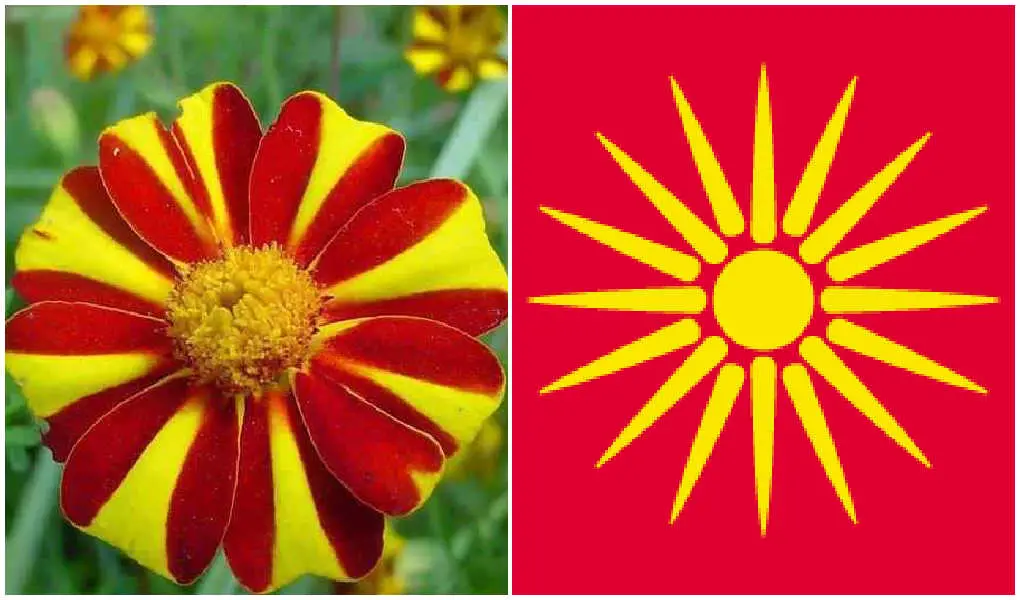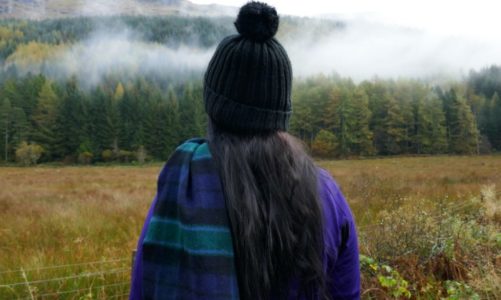Flags often embody the essence of a nation’s identity, capturing its history, culture, and natural elements in vibrant colors and symbols. Many flags around the world beautifully reflect the natural landscapes and features that define their countries. Flags are more than mere symbols; they are a poetic reflection of the natural beauty and essence of the nations they represent.
Encountering flags in natural settings elicits a sense of national pride and connection. These special captures also teach observers about the various emblematic colors and symbolism of countries around the world. The below graphics share flags that were randomly found in nature.
Flags Found in Nature – Natural Symbols
The flag of Lebanon prominently features a green cedar tree. This emblem is not just a symbol of strength and endurance but also represents the extensive cedar forests that have been a significant part of Lebanon’s natural heritage for centuries.
Next, the flag of Canada features a red maple leaf symbolizing the country’s vast natural landscapes, unity, and peace. The red and white colors reflect Canada’s historical ties to the United Kingdom and its French heritage, embodying national pride and the core values of inclusivity and tranquility.
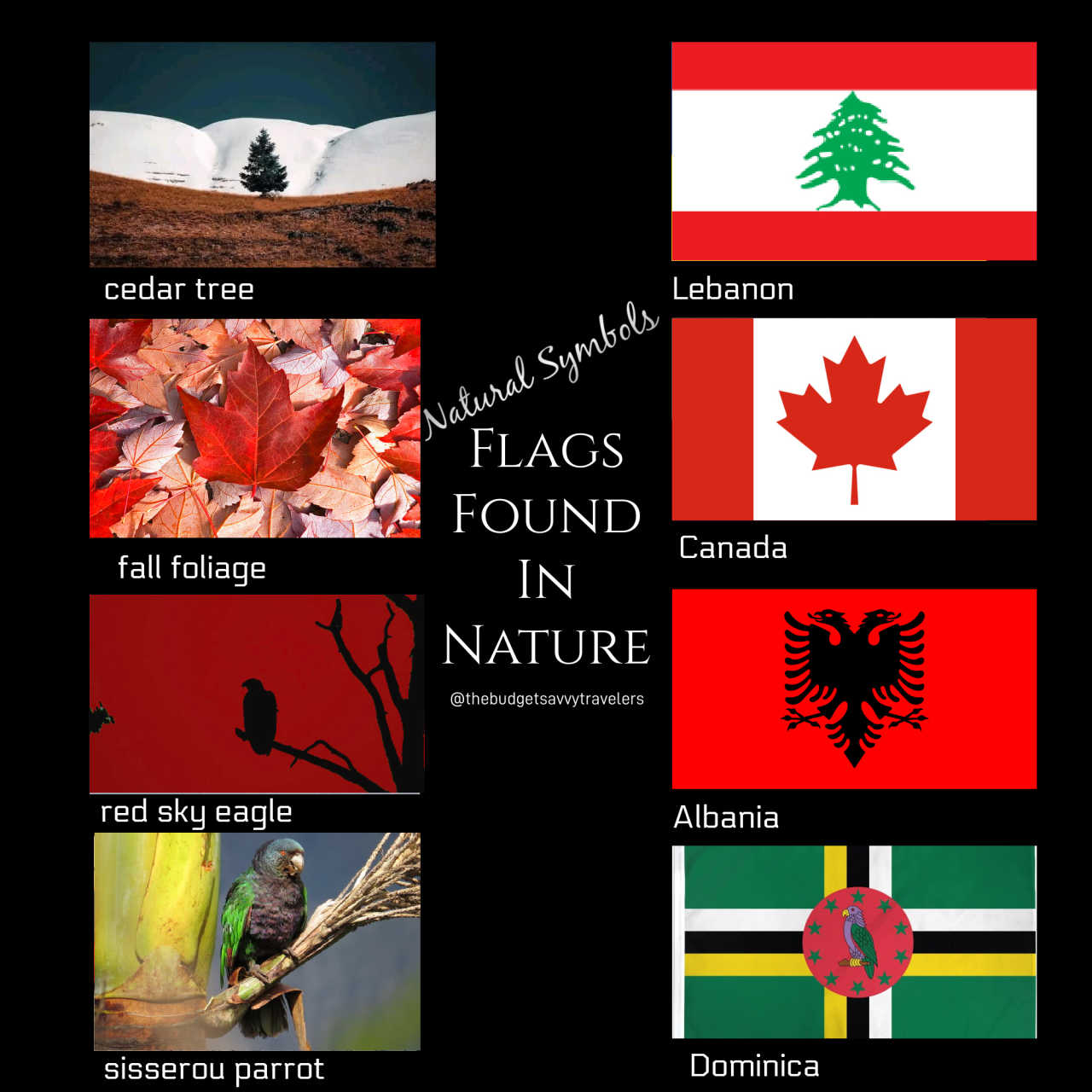
The Albanian flag features a black double-headed eagle on a red background, symbolizing the country’s sovereignty and the historical legacy of the medieval noble family, the Kastrioti. The red color represents bravery and strength, reflecting the enduring spirit and valor of the Albanian people.
Last, the flag of Dominica features a green field with a centered cross of three bands of yellow, black, and white, symbolizing the island’s lush vegetation and the cultural, ethnic, and religious diversity of its people. In the center is a red circle with a Sisserou parrot, representing the island’s wildlife and its commitment to preserving nature.
Flags Found in Nature – Macedonia Edition
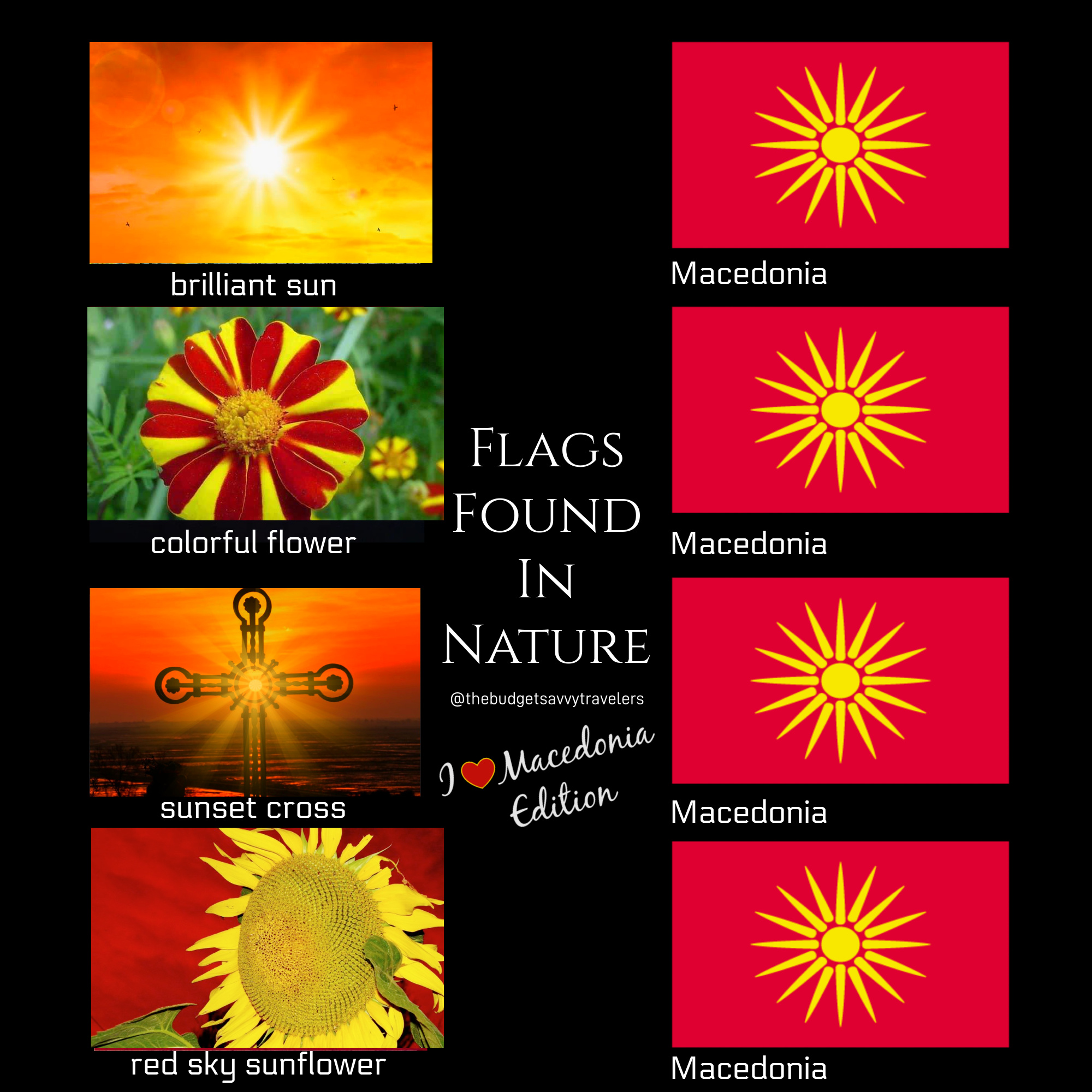
Macedonia’s flag is stunning with its bold red background and yellow Vergina Sun. These color schemes are commonly found in nature among sunsets, flowers, and landscapes. The Flags Found in Nature—I Love Macedonia Edition is one of my favorite graphic designs, representing one of our favorite travel destinations.
Flags Found in Nature – Asia Edition
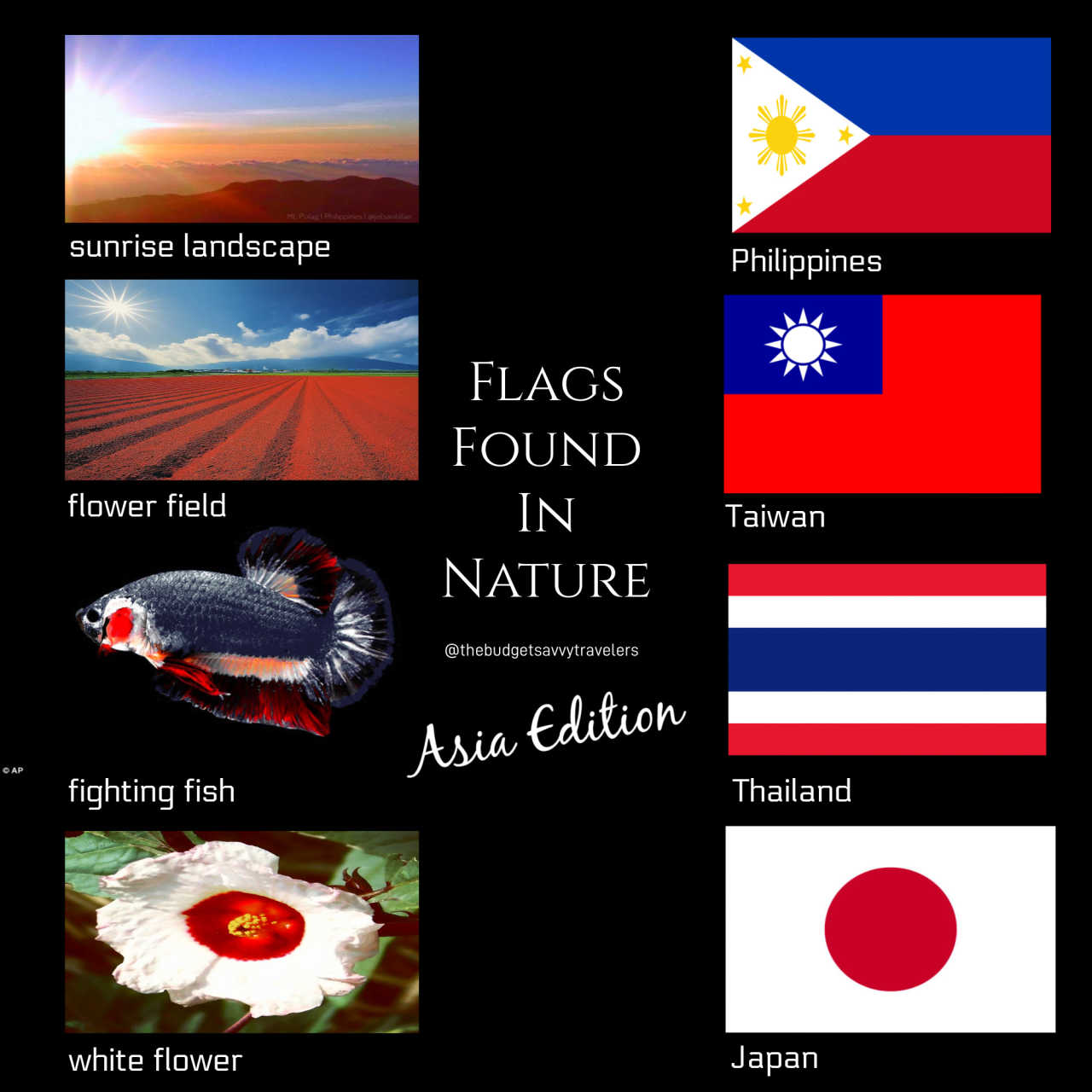
Several Asian flags feature sun symbols, including those of the Philippines and Taiwan. Another example is Japan’s flag. It prominently displays a simple red circle, signifying the deep cultural and natural significance of the “Land of the Rising Sun.”
The story of the Thailand flag found in nature is an astonishing one! In 2016, a rare betta fish with coloration resembling the Thai flag, featuring distinct red, white, and blue stripes, was sold for over $1,500.
The Thai flag is known as the “Tri-Color Flag” or “Triranga.” It symbolizes the nation (red), religion (white), and monarchy (blue), mirroring the betta’s unique pattern and national significance.
Flags Found in Nature – South America Edition
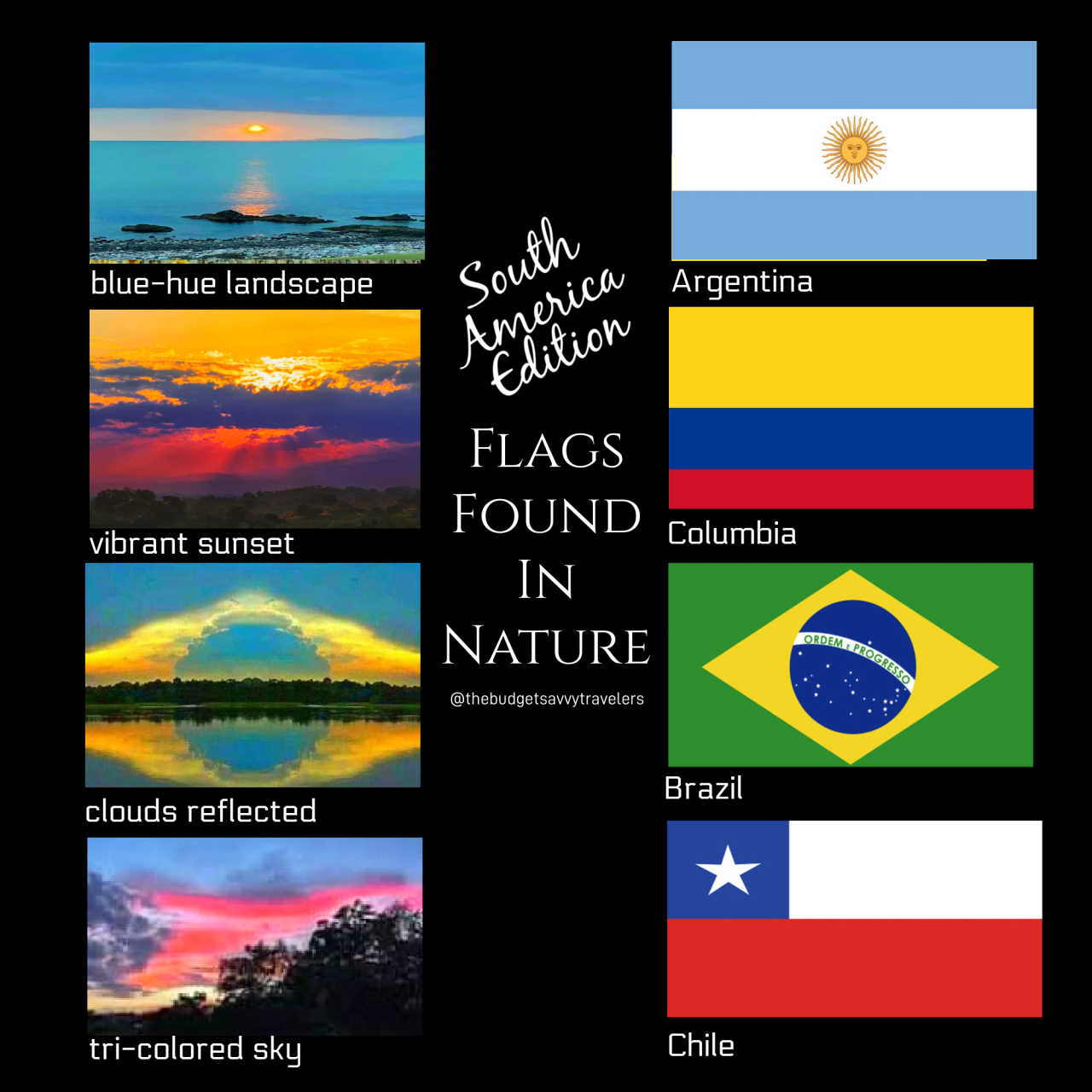
Sunsets often resemble country flags as the sky is painted with brilliant hues of red, orange, and yellow. These are similar to the stripes and patterns seen on flags. When flags are found in nature, they evoke feelings of national pride and connection. Additionally, they remind observers of the colors and symbolism of their country’s emblem.
For example, the flag of Brazil displays a striking green field, symbolizing its lush rainforests and abundant natural resources. The yellow diamond in the center represents Brazil’s wealth in gold. Last, the blue globe and white stars echo the vast, clear skies above.
Flags Found in Nature – Balkan Edition
Throughout history, people have gazed at the sky for art and inspiration. From ancient times to today, the heavens have been a source of both artistic expression and scientific curiosity. Case in point, note the flags found in nature of these Balkan countries; the sun for the Macedonia flag, the crescent moon for Turkey, and the linear clouds for Greece.
Flags Found in Nature – Cacusus Edition
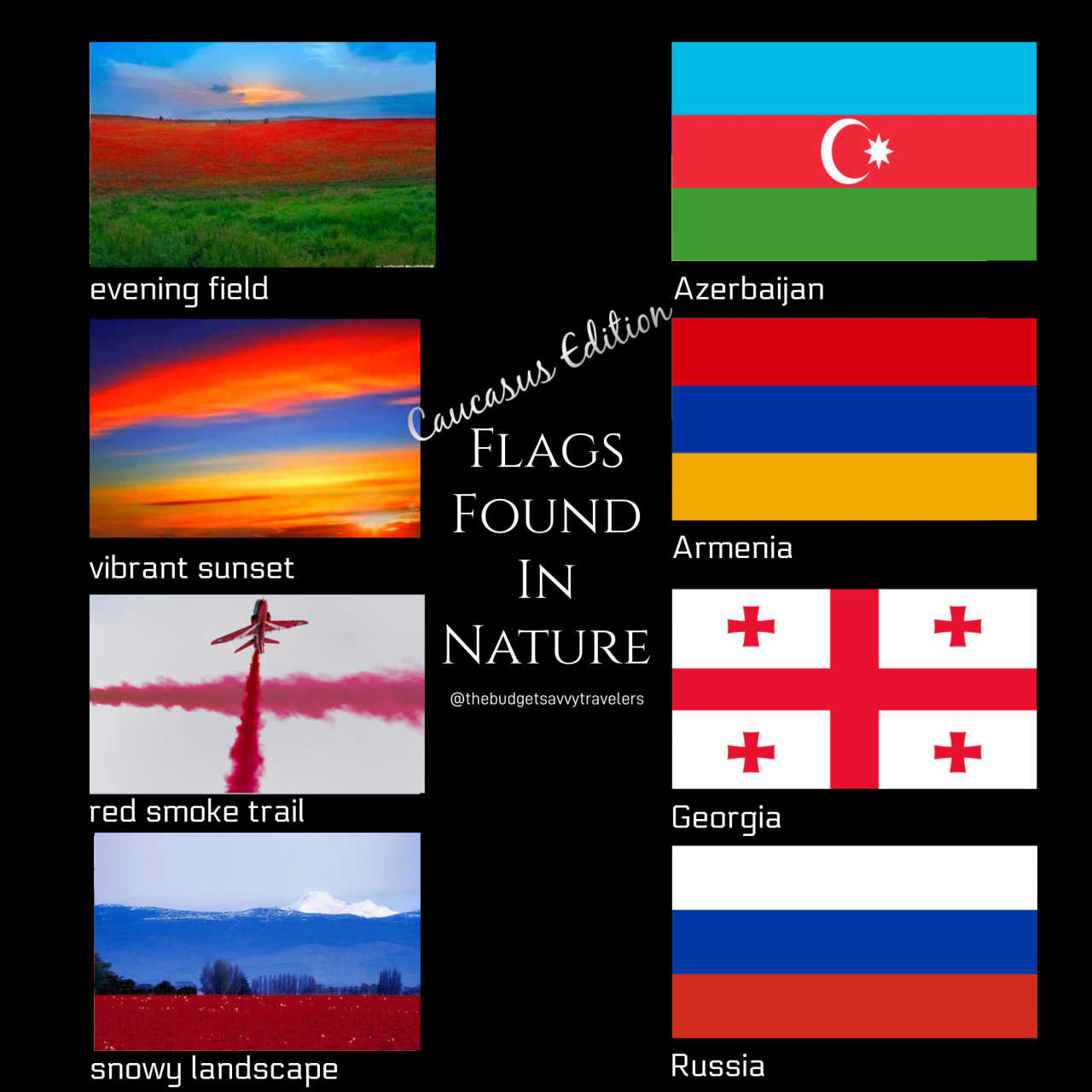
The Caucasus region is situated between the Black Sea and the Caspian Sea. It includes parts of Russia as well as countries like Georgia, Armenia, and Azerbaijan. Known for its rich cultural diversity and stunning natural landscapes, this area has a complex history shaped by various civilizations and a blend of Eastern and Western influences.
Flags Found in Nature – Baltic Edition
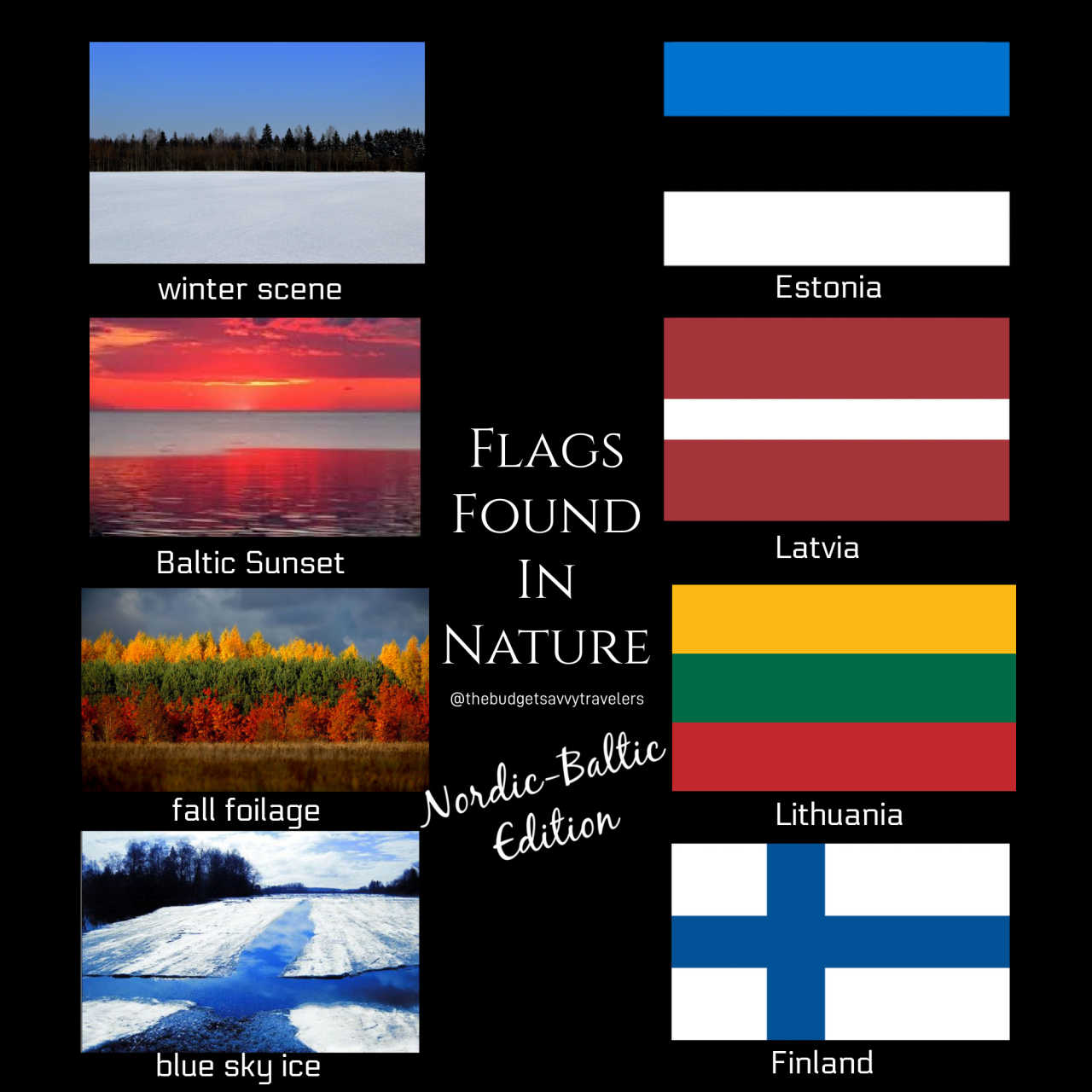
Flags with horizontal lines visually look like scenes of natural landscapes. Some of the best examples of flags found in nature derive from the Nordic-Baltic region, such as Estonia and Lithuania.
Flags Found in Nature – Balkan Edition II
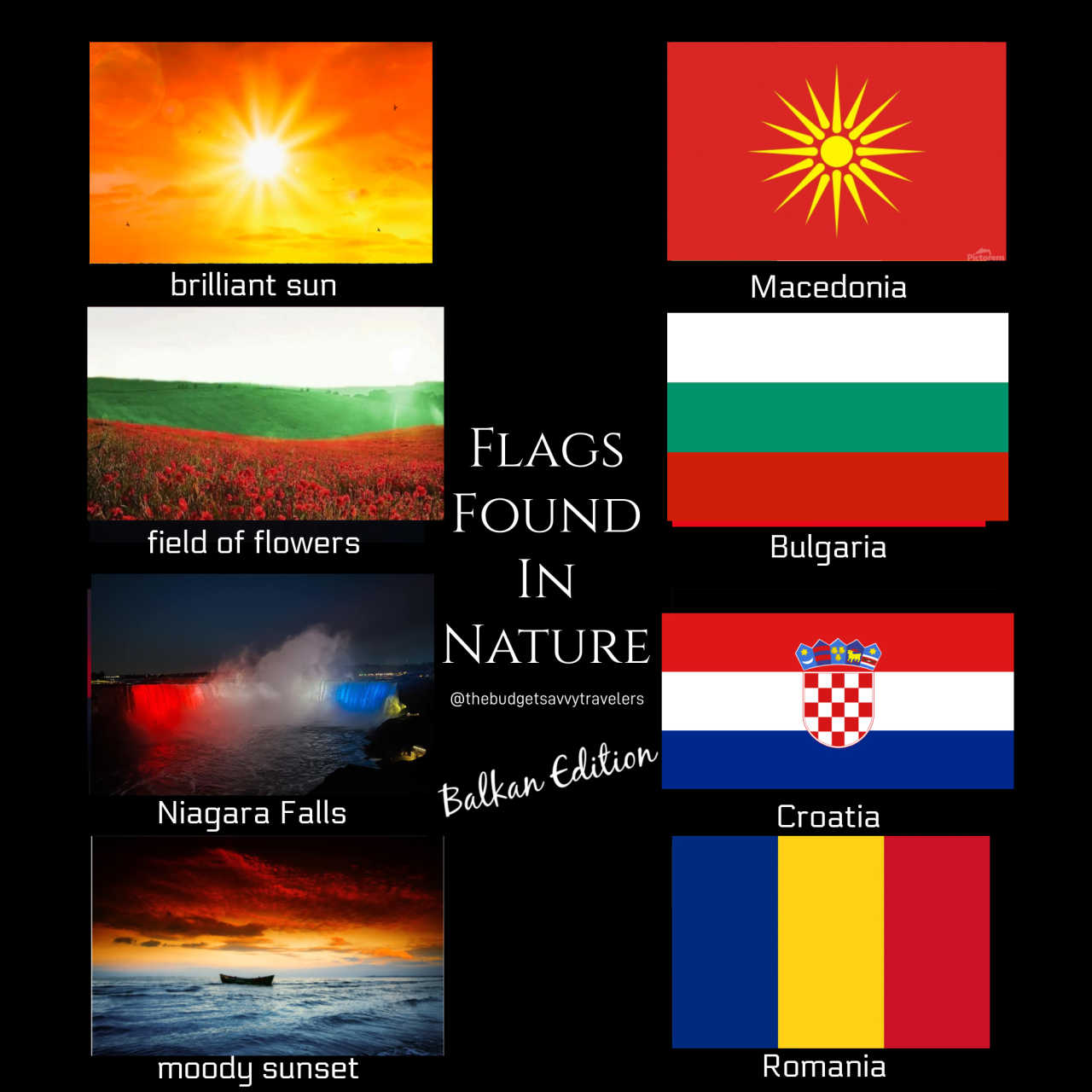
Seeing the Croatian flag against the backdrop of Niagara Falls can be a striking sight. Its distinctive red, white, and blue tricolor symbolizes the nation’s unity, history, and resilience. Set against the natural grandeur of one of the world’s most famous waterfalls is an amazing sight!
Flags Found in Nature – Russia and Turkey
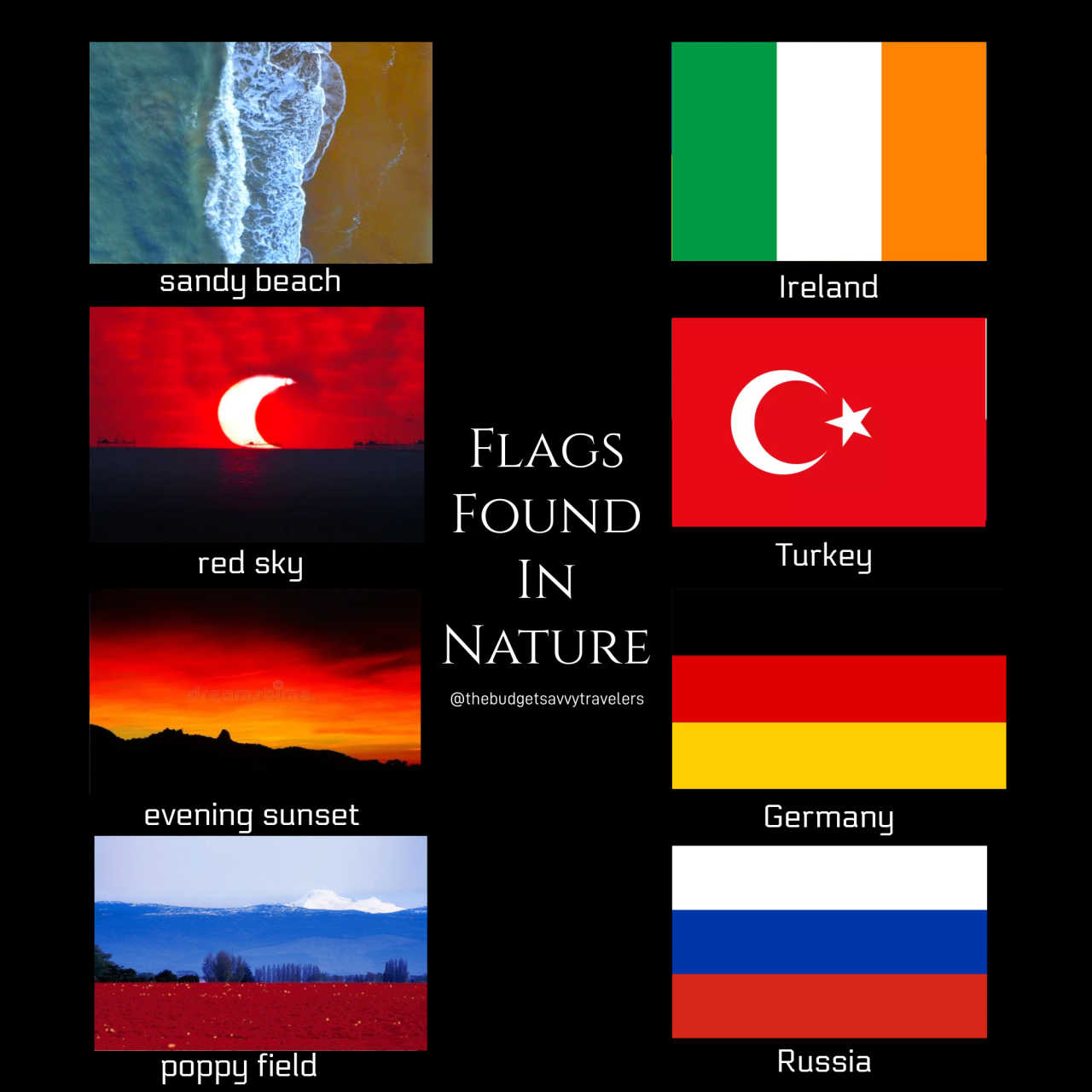
From sandy beaches to vibrant sunsets, Mother Nature is spectacular when she recreates a nation’s flag. The sunset with the colors of the German flag was a highly unusual and brilliant find!
Flags Found in Nature – Russia and Ukraine
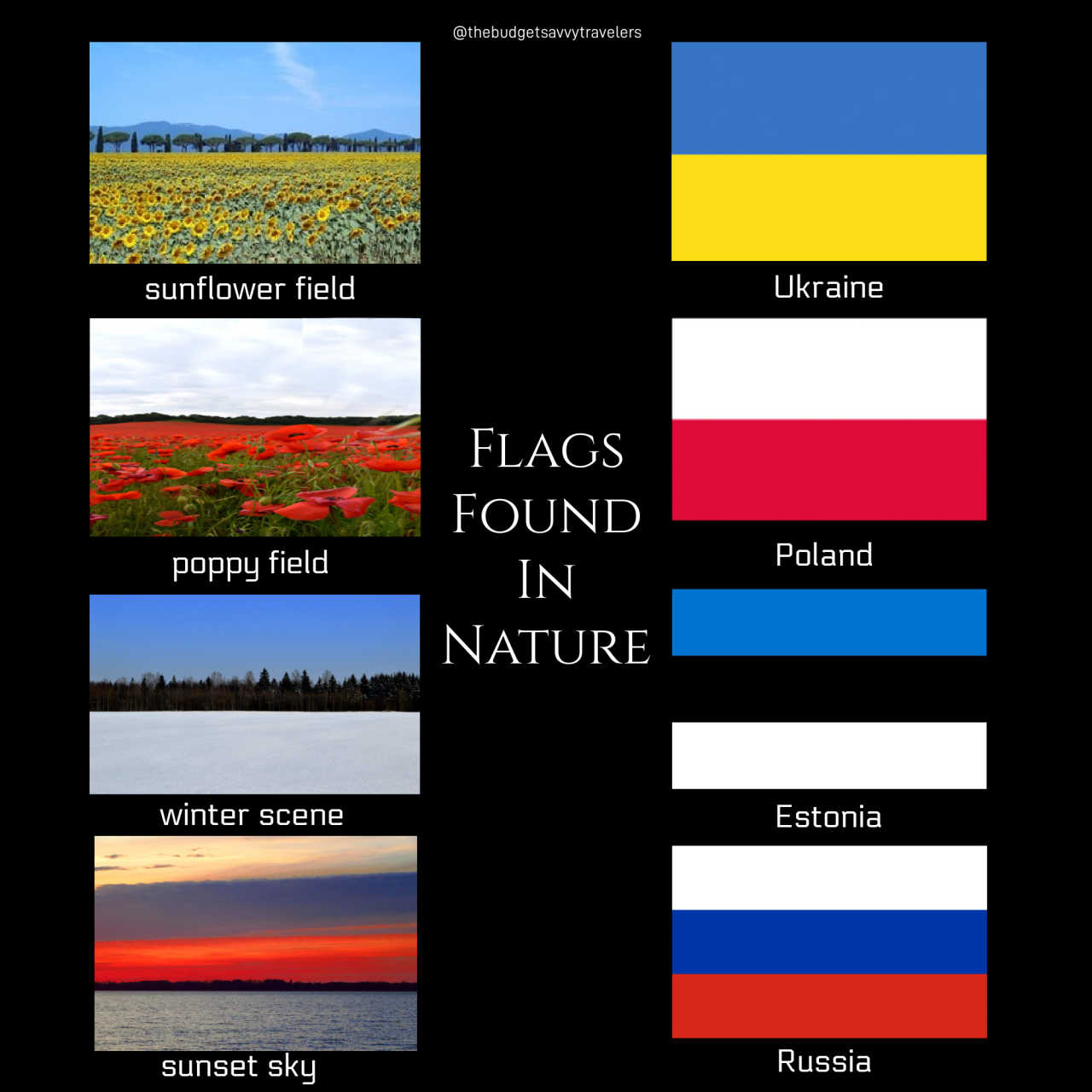
The above graphic shows some of the best representations of flags ever captured. Linear flags naturally resemble landscapes and Poland’s poppy fields and Ukraine’s golden farmland are classic examples.
Flags Found in Nature – The British Isles
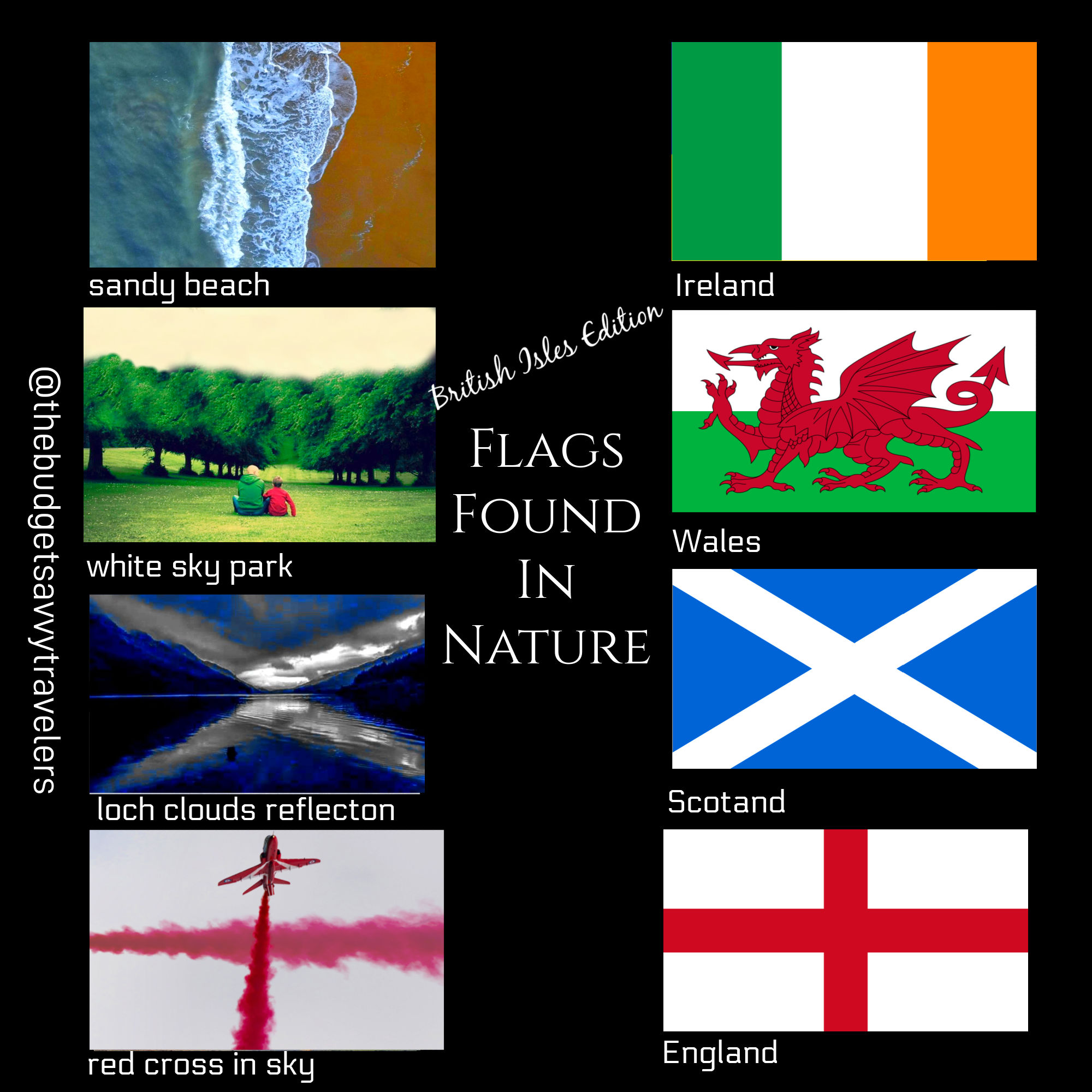
The flag of Ireland, known as the tricolor, consists of three vertical stripes of green, white, and orange, symbolizing Irish Catholics, Irish Protestants, and peace between them. The flag of Wales features a red dragon passant on a green and white field, representing the dragon of Cadwaladr, a symbol of the Welsh nation. Of course, finding a dragon in real life is impossible!
Scotland’s flag, St. Andrew’s Cross, is a white diagonal cross on a blue background, named after the patron saint of Scotland. England’s flag, the St. George’s Cross, is a red cross on a white background, representing St. George, the patron saint of England.
We Need Your Help
Did you find this article helpful? If so, bookmark it and when you’re planning your next vacation click on any of the links below before finalizing reservations. You’ll get the best price, we’ll earn a small commission, and you’ll help support future articles.
Thank you!
BEST TRAVEL SEARCH ENGINES
🏘️ Book Accommodation
We use Tripadvisor to compare prices and reviews in advance and check availability
✈️ Book Your Flight
To find the cheapest flight options, use Skyscanner to find the most suitable choice for you
🚗 Reserve Rental Car
Use Discover Cars to compare prices and view the largest selection of vehicles

